The Mamiya Monsters
Mamiya RZ67 Pro and Mamiya RB67 are sort of the same camera. But not really. While there are a few RB lenses you can use on the RZ, you cannot mount RZ lenses on an RB camera. And heavy? Uhh, a Nikon F4s with all batteries loaded, is about 1430 g. But an RZ67 with a 110mm lens is about 2400 g. This is a very substantial camera. While you can shoot it handheld, I usually used a tripod. OK, that’s the bad. If you are expecting more bad, don’t hold your breath. Everything else about this camera is beyond reproach. A favorite of many a famed photographer, (Rankin, etc.), the 6×7 format of the RZ67 has always been thought of as the “perfect format”.
Mamiya RZ67 – Film or Digital
All models use bellows for focusing. The newer RZ’s have half-stop shutter speeds, but the first is full stop settings. I never found that a problem. Of course the RZ67 Pro IID has electronic coupling which accommodates digital backs, still sold by Mamiya RZ67. The Mamiya RZ67 is a modular camera, with many accessories, including viewfinders, different backs for shooting 6×7, 6×6, 6×4.5, and various focusing screens. When you compare the negative size with a 35mm camera, it becomes obvious it’s ‘no contest’. You can actually view contact prints without a loupe!
The front of an RZ67 is some really hard ABS plastic stuff. The RB67 was all metal. I suppose this was for a weight advantage. But I still would not drop this beast. Two things that I’d always worry about damaging were the humongous mirror and the exposed bellows when focusing. As it turned out, I never had a problem with either. However, the large mirror “cracking” or bellows “ripping” was always in the back of my mind. I guess I’m just a nervous nelly, because the reality is, this is a very well built, solid camera. A Hasselblad has nothing in build quality over these monsters!
The Revolving Back
I think the revolving back heavily contributes to the size of this giant. It can be rotated to shoot either portrait or landscape without turning the camera itself. A little switch on the side of the camera. In the “R” position you can rotate the back freely. In the “M” position you can shoot multiple exposures, allowing you to cock the shutter without the film advancing. You are able to expose a single frame as many times as you like.
I have seen many photographers hand hold this monster. And I have handheld this monster. But it was probably meant to be a tripod mounted camera. It is very well balanced from the point of the 1/4″ bottom mount. If you do use a tripod, don’t chintz out on a tripod. This is a heavy camera. They do sell grips for hand holding, and they are a cheap investment for location shooters. But I’ve rarely seen them in use. And that even includes Herb Ritts. Focusing is very easy while holding with both hands. And the bellows even makes a ‘normal’ lens into a macro.
Leaf Shutter Lenses
The leaf shutter lenses support flash/strobe sync at all speeds up to 1/400th sec. The Aperture priority mode only works when using an AE penta-prism viewfinder. There are focusing knobs on both sides of the camera. As the bellows extend, you can focus closer and closer. The diagram on the side of the bellows is a “cheat sheet” for adjusting exposure when you are really close focusing. However, since I never did any macro stuff, I honestly never paid attention to it. My bellows were not extended,…or barely extended.
The film backs have ISO dials on them, and you can change backs in mid-roll thanks to the dark slide. Or changing to Polaroid backs. The shutter release is at the front of the camera. It has a lock position to prevent inadvertent exposures. The batteries last forever. I use to change them once every 3-4 months, and never ran out of battery power. (shooting every day) While the leaf shutters are quite quiet and soft, the mirror clunk is quite substantial. Which is why I almost always used a shutter release cable. (except when hand holding)
Viewfinder Heaven
I only had a waist level finder. Whether you are interested in this camera or not, you have to look through the almost holographic viewfinder at leat once. It’s bright, gigantic,….and like you fell through Alice’s looking glass. In fact, if I had to choose one thing about this camera that bested every other camera in existence,…it would be the viewfinder. You have now entered the “Land of Giants”. Enough said. Of course, right is left and left is right. But you’ll see things you may have never seen before in the image before you. And the flip up magnifier is there as a critical focusing aid. Since it has a split screen focusing aid, I rarely used it. But it’s there. However, I only used normal focal length fast lenses. I’ve heard some complaints from people using slow zooms. While it’s only anecdotal, I’m sure it’s probably valid. But why would you use a zoom on this camera?
Aspect Ratios
A normal focal length on this camera is the 110mm f/2.8. This is about equivalent to 50mm on a 35mm camera. Also, take into account the aspect ratio. On a 35mm camera that’s 3:2. The 6×7 format is closer to 4:3 aspect ratio. More image fits on common paper sizes. The “2.8” provides a pretty narrow depth of field on this film size. Like “1.4” on 35mm cameras. So, for those heavily into bokeh,…you got it. The filter threads are 77mm. As most Sekor lenses, they are very sharp. KL lenses are suppose to be sharper. But like the Schneider Xenotar was suppose to be sharper than my Zeiss on my Rollei 6008,…I think that’s just urban legend. And at this film size I doubt it matters. Either way, my Nikons, (or even Leicas), don’t stand a chance. But then, I wouldn’t use this camera for street or sports shooting. But they do have tilt/shift lenses, and super wide lenses,…and the list goes on. Whatever you shoot, Mamiya has you covered.
Big and Heavy, But…
OK. This camera is big, heavy and shoots 120, (or 220), film. (unless you get the digital back model) So, what’s so special? Well, they are going for relatively dirt cheap prices now. You’d be hard pressed to find sharper lenses. It’s totally modular. You can “add and subtract” at will. There are no issues scanning the sizeable negative or transparency. No art director has ever balked at a well exposed 6×7 image. Parts are still available. If either impressing models or carrying around ‘tanks’ or shooting medium format macro or scaring little children is your thing,…then you’ve come to the right place. This is a very impressive camera, no matter how you slice it. The RB67 weighs in at over 5.9 lbs with a lens on. Again, depending on lenses and accessories, the RZ67 is about 5.3 lbs. Yeah, it is lighter, but not by much.
Useless camera minutia: The Mamiya RZ67 was used by photographer Charles O’Rear for the rolling green hills in ‘Bliss’, Microsoft’s desktop photo seen by over a billion people! The actual Mamiya RZ 6×7 camera body fitted with a 150mm lens, viewing prism, motor winder, film back, and handgrip, owned and used by photographer Herb Ritts was donated by the Herb Ritts Foundation to raise money for the Elton John AIDS Foundation. The RZ is a much more intuitive and easier to use camera. It’s RZ viewfinder masks are real black masks rather than lines in the viewfinder. Optics wise the RZ has some better lenses and the KL lenses. It’s also a lot easier to set the shutter on the RZ with it’s electronically controlled shutter dial on the body, the lenses are a lot simpler and cleaner barrels as a result with only a aperture ring. But, in the end, using either camera,…you have a 6×7 negative that makes my Nikon negative look like the “90 lb weakling” of photography.
| Mamiya RB67 | Mamiya RZ67 | |
| Digital backs | Pro-S and Pro-SD will accept Mamiya ZD back, with adapter | Pro II and Pro IID will accept several different digital backs, w/ adapters |
| Electronic Shutter Speeds: | None | Continuous range through 1/400th |
| Exposure Modes | Manual only | Manual or Auto with viewfinder |
| Flash Sync Speed: | All | All |
| Focusing: | Bellows (on camera) | Bellows (on camera) |
| Lens Compatibility: | RB lenses only | RB or RZ lenses |
| Mechanical Shutter Speeds: | Incremental through 1/400th | 1/400th only |
| Metering In-Camera: | No | No |
| Metering Viewfinder Available: | Yes | Yes |
| Models | RB67 Pro / Pro S / Pro SD | RZ67 Pro / Pro II / Pro IID |
| Multi-Coated Lenses? | Not All | All |
| Released | 1970 / 1974 / 1990 | 1982 / 1995 / 2004 |
| Revolving Back? | Yes | Yes |
| Separate Lever to Advance Film? | Yes | No |
| Shutter Control: | Mechanical | Electronic |
| Shutter speed (Max.): | 1/400th | 1/400th |
| Shutter Type: | Leaf | Leaf |
| TTL Flash? | No | No |

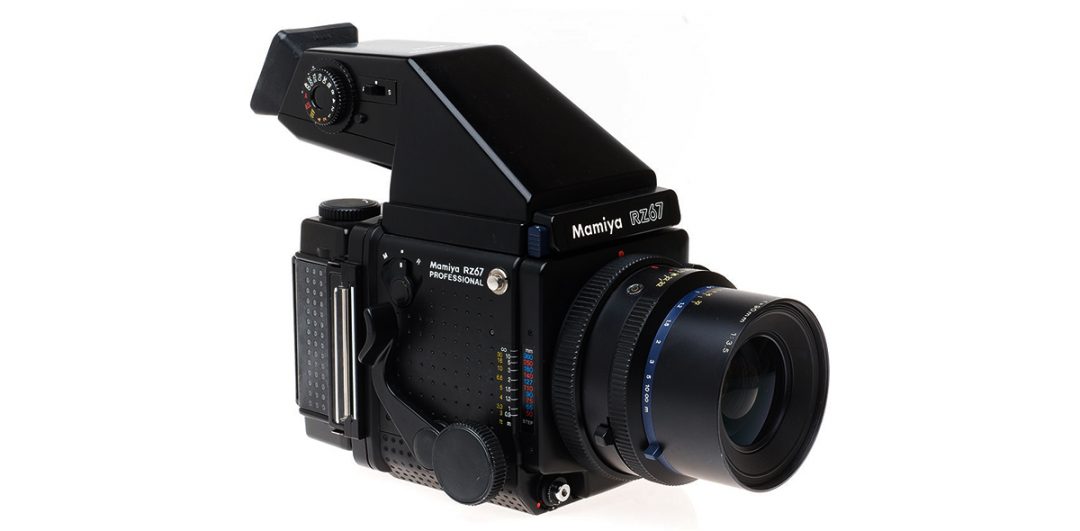
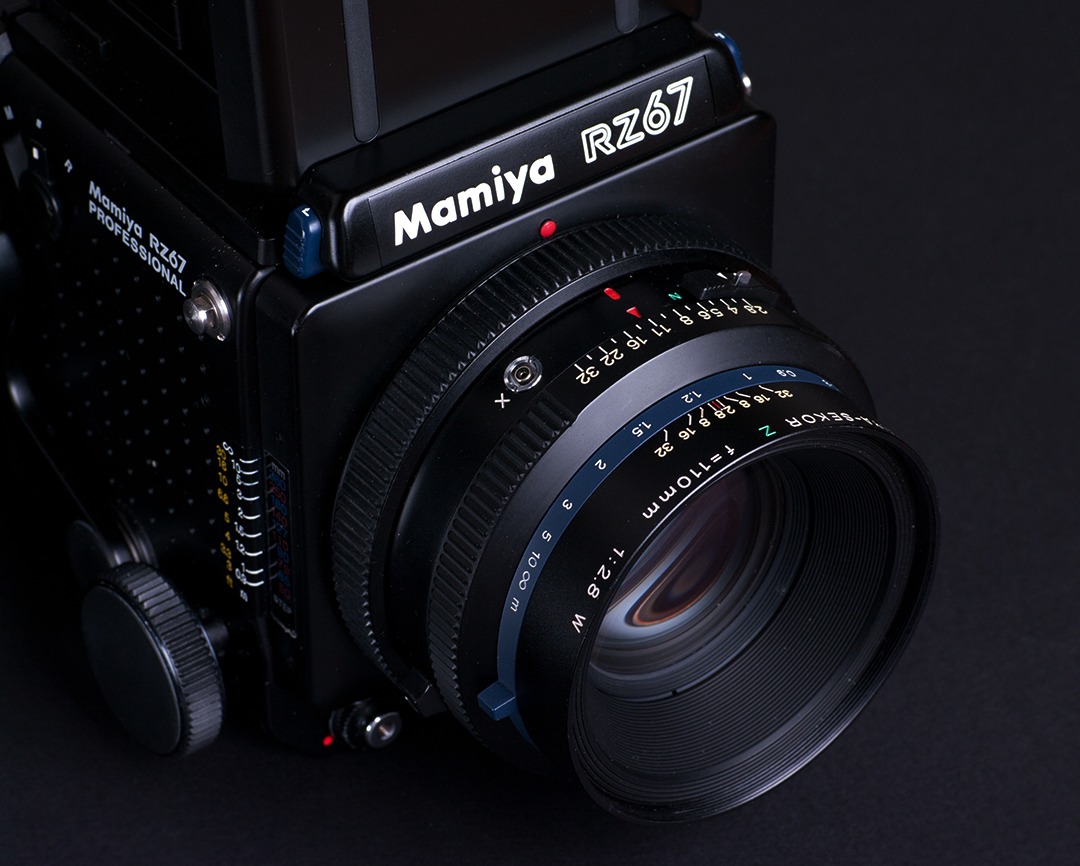
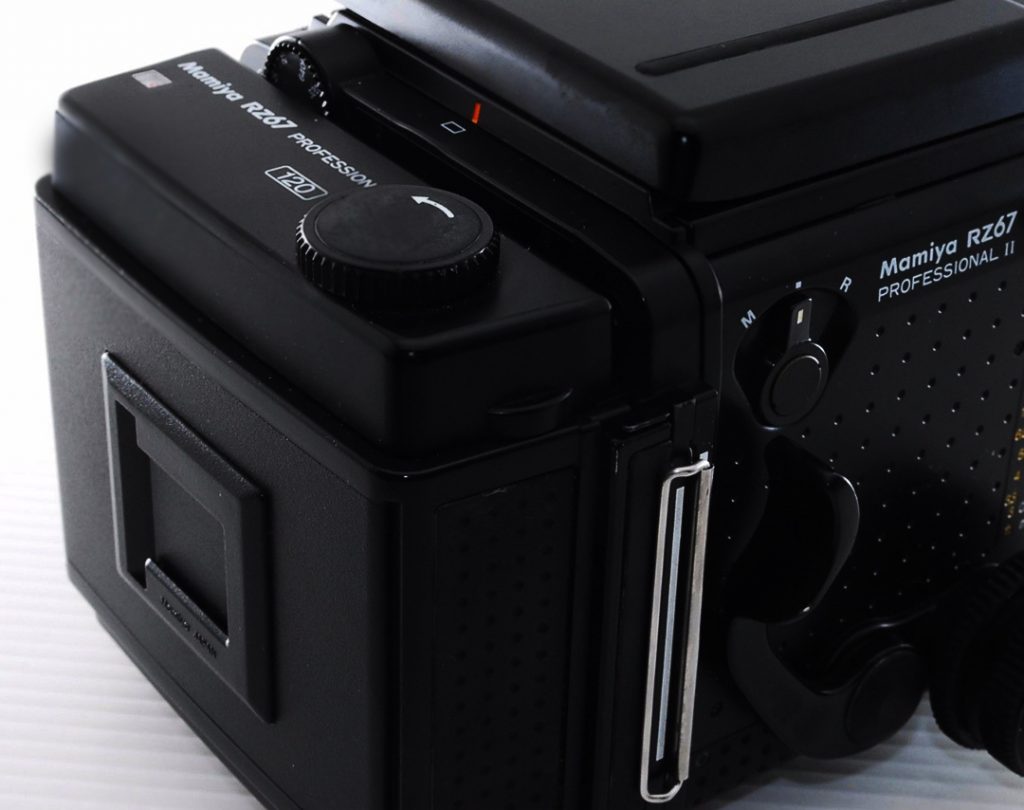
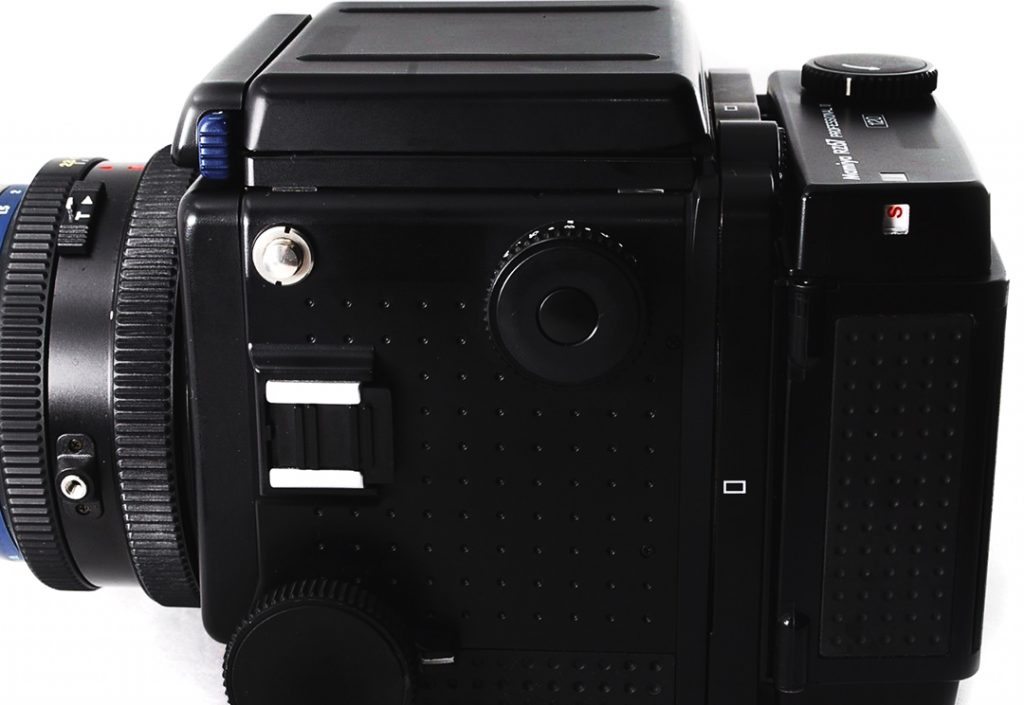
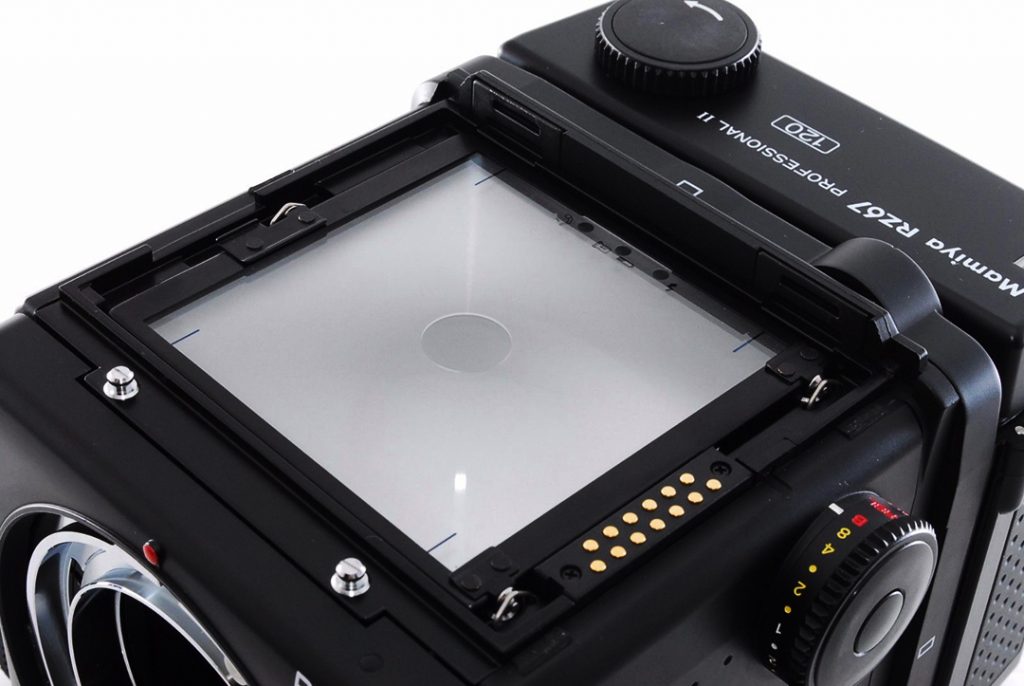

The 90mm is the 50mm equivalent to 35mm not the 110mm
Sorta. But the 110mm is also used as a “normal” lens. The “crop factor” for 6×7 in reference to a 35mm equivilent is actually .5. So, 90mm on 6×7 is equal to 45mm on a 35mm camera. So, a 110mm is actually a 55mm equivilent. According to Mamiya,…”The 110mm f/2.8 is an excellent, all purpose normal lens.” Either/or. For the exact formula, see here: https://anatomyfilms.com/medium-format-lens-vs-35mm-lens/ 😊
Somebody just wrote and asked a good question. Are RB and RZ viewfinders interchangeable? Well, I answered like this; Sorta. You can use an RB67 PD prism with an RZ67, but you need the “Electrical Contact Cover” accessory to protect the electrical contacts and avoid electric shorts, which may damage the electronics of the RZ. Just because they physically fit, doesn’t mean it’s a good idea. Even for a simple waistfinder, I’d still cover those contacts. And, of course, no info from the camera will be relayed. (remember, the RB is totally mechanical) For the cover, try https://shrsl.com/2gbi0 Or try Ebay. Also, they usually have some RZ finders available on Ebay. Almost all come from Japanese vendors. However, I’ve had no issues ever dealing with Japan. (China? That’s another story. 😡)
Federico